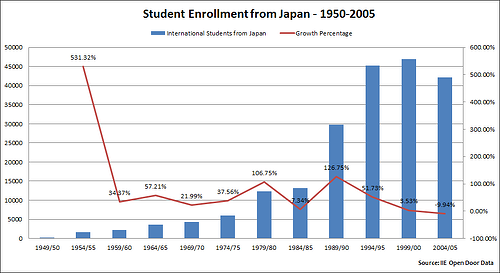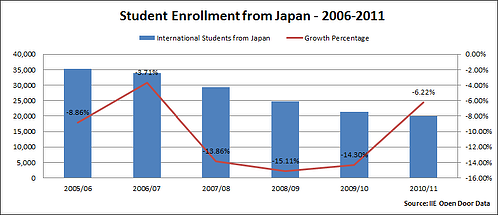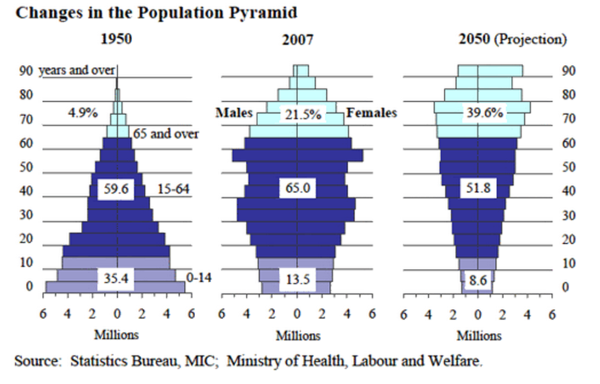Japan was one of the big economic and political success stories after the second World War. Japan was also one of the big success stories of international student enrollment in the United States. Chart 1 shows the enrollment development of Japanese students growing steadily for 50 years. Chart 2, on the other hand, shows in detail the development during the last five years with Japanese student enrollment declining steadily. What is happening in Japan?
Chart 1

Chart 2

Japan is one of the wealthiest and most economically successful countries in the world. Japan's GDP per capita is in the top twenty countries in the world. Yet, we have a number of factors coming together reducing interest in studying abroad:
- The Japanese economy has been stagnant for the past 20 years with slow growth rates recovering from a broad-based real estate bubble. The government has tried unsuccessfully to stimulate economic growth.
- Japan has a well developed and sophisticated education system, which is able to educate the workforce inside the country, with the exception of the global experience.
- We venture to say that the expansionary phase of the Japanese economy has slowed. Japanese companies are successful exporters and producers but there is no dramatic push towards the US market as happened in the second half of the 20th century.
- Demographics: Chart 3 shows one of the biggest changes. Japan is aging quickly. Look at the changing size of the youth cohort up to 15 years old (bottom figure on chart 3) -- In 1950, there were 35.4 million, in 2007 - 13.5 million and in 2050 projections show 8.6 million Japanese under the age of 15. The group of students is obviously falling dramatically due to lower birth rates in Japan.
Chart 3

Chart 4

- More recently and probably in the foreseeable future, the exchange rate changes have made studying in the United States a great deal more expensive for Japanese students. So in addition to our domestic increases in higher education, the change in exchange rate between the U.S. dollar and the Japanese yen has increased the cost of education for Japanse students about 25 percent during the past two years.
Conclusions: We don't see many optimistic trends supporting recruitment in Japan. That does not mean giving up on the market but you have to put it into perspective and allocate your resources accordingly.
Interestingly, a colleague living in Japan noted that Japan has become a successful study destination for international students. Currency trends and Japanese business expansion in other markets besides the U.S. encourage students to study in Japan. As a result, Japan is becoming a stronger friendly competitor for international students.
Update May 17th, 2013: here is a link to an interesting piece from the ICEF Monitor on how the Japananese government is trying to stimulate the international education market.


